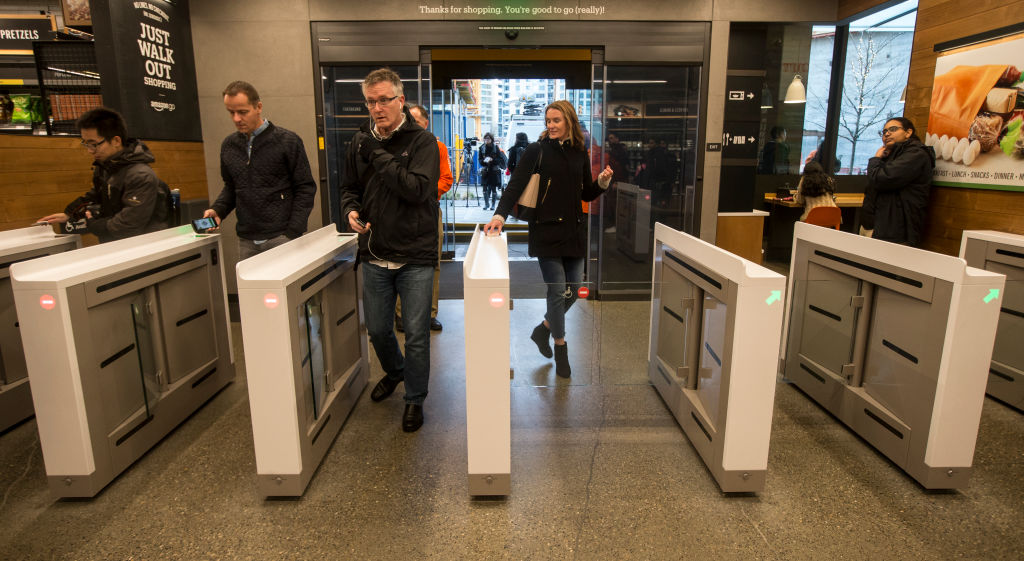As someone in the retail business, you may have often wondered how RFID and barcodes are different. While you’re aware of what the two are in terms of functionality, you might be wondering which one is better for your specific inventory needs.
So, we’re here with everything you need to know about the two inventory tracking methods to help you make an informed decision.
What Are RFID And Barcodes?
RFID stands for Radio Frequency Identification. It involves using radio waves to read and obtain information stored on a unique tag attached to a product. An RFID tag is made of a small chip which is capable of carrying up to 2000 bytes of data and an antenna. It needs a scanner to be read.
A barcode, on the other hand, is a rectangular or square image of a series of parallel black lines and white spaces in differing widths. It also requires a barcode scanner to be read.
How RFID Tags And Barcodes Are Similar
Here are a few important similarities between the two forms of product identification:
- Both RFID tags and barcodes can help you track where your products are.
- They can both be used to collect data.
- The stored data on both can be read using either a fixed or a handheld scanning device.
Difference Between RFID And Barcodes
The two are also different in some key ways, such as:
- Barcodes need the scanner to be in the line-of-sight of the scanner to be read. RFID tags, on the other hand, can be read as long as they are in a specified range since they are powered by near-field technology. This is why barcodes need to be scanned one at a time, while many RFID tags can be scanned at one go.
- Because they are usually printed on paper or adhesive labels, barcodes are prone to damage easily. RFID tags, however, tend to withstand wear and tear for longer. They can, h0wever, be affected by metals and some liquids.
- The information that a barcode can store and represent is limited when compared to an RFID tag. An RFID tag can hold up to 8 kB of data including information on the product’s vendor and manufacturing date.
RFID Vs Barcodes: Which Of The Two Is Better?
Although it may seem like RFID might be the obvious better choice, this isn’t necessarily true in every situation.
Yes, RFID does have many advantages when compared to barcodes. However, in certain situations, barcodes tend to be the better choice. For instance, if you run a small business and are looking for a cost-effective way to fulfill your tracking needs, barcodes are the way to go.
This is particularly significant because an RFID system can be much more costly to implement when compared to scanning and using a barcode system. Moreover, you may not always need all of the product’s information to be embedded into its RFID chip, and can instead do with a system that stores less information but gets the job done.
That said, RFID usage also has some clear advantages, such as
Speed: RFID tags can be read much faster than barcodes because they are recognized by the activation of a radio signal within their range.
Function: Because it employs near-field technology, a number of items like say in a box can be scanned all at once without even having to open it with RFID. RFID scanners can also be fixed at many strategic points in an entire facility or warehouse. This allows for scanning several items automatically without manual intervention.
Accuracy: In the case of scanning requirements in busy warehouses and shipping centers, using RFID tends to lead to more accurate and convenient product scanning than barcodes.
How To Make The Choice Between RFID And Barcodes
While deciding which of the two better suits your inventory needs, factor in the aspects below.
What you are tracking
This essentially means taking into account the size, shape, material, and other physical aspects of the items you are tracking. These will help you arrive at the preferable choice between RFID and barcodes.
If all the items you are tracking are
- the same shape and size, and
- reaching you one at a time on a conveyor belt,
you can set up a fixed or handheld barcode scanner quite easily.
However, if you have varied items being tracked, the environment is chaotic, and/ or you have other factors complicating the inventory process, RFID works out to be a quick and convenient option.
However, some materials like metals and a few liquids tend to interfere while scanning RFID tags. Moreover, inaccurate readings can occur when local WLAN or Bluetooth signals interfere with the RFID scanner’s signal. In such cases, you’d be better off using barcodes.
The things you need to know about what you are tracking
If you just need to know whether a product is in or out of stock, both barcodes and RFID work quite well. Barcoding is, in fact, more than enough in such situations. It will record the current state of the item along with generic product information like its name, SKU, and manufacturer.
However, if you need more detailed information/ data about every item in your inventory, then you should use RFID. This could apply to when you’re tracking the stock of a limited-edition item. You then need to know exactly which of those products you sold, when, and to whom.
How you are eventually going to track
The physical environment and processes involved are also important to decide if barcoding or RFID will work better for you.
If you are using a fixed or handheld scanner, then every product’s barcode needs to be read directly by the scanner.
However, in the case of RFID, the tags just have to pass through anywhere within the range of the antenna.
The antennae can be used in different configurations and set up in varying ranges. So, you can design a highly automated process around the current workflow or environment.
How much you’re willing to spend
RFID technology can be quite costly if you do not have the budgets for it. Just the tags themselves can cost upward of $0.5 for a few thousand simple tags. This can go up to $2.5-$5 per tag for more sophisticated ones that hold more information. However, as you buy more, the per-unit price begins to fall significantly. This is why RFID tags are ideal for businesses that are scaling their inventory up rapidly, both in terms of cost and to make counting and warehouse management easy.
Barcodes, on the other hand, can be printed for free either using online tools or within Primaseller’s inventory management system. You will be investing only in barcode scanners. This option is ideal if you expect to grow at a more steady pace, are selling products for which market data is scarce, or if you have fewer warehouse demands.
So, if you’re trying to decide between RFID and barcodes for your inventory needs, assess and evaluate all the above aspects. Also, remember that you need to keep disruptions limited and factor in your budget as well.
Request Demo
thank you
thank you
thank you
Request Demo
window.IS_INDIA = 0;window.USER_COUNTRY = 'China';window.USER_CITY = 'Hangzhou';window.USER_COUNTRY_ISO = 'CN';
Armed with a degree and a pen, loves to tell stories. When not telling stories, she also works. Hard to decide which one she likes more.
(function(d){var s=d.createElement('script');s.type='text/javascript';s.src='https://a.omappapi.com/app/js/api.min.js';s.async=true;s.dataset.campaign='cxecxy09nlvnnyvfiqjf';s.dataset.user='22867';d.getElementsByTagName('head')[0].appendChild(s);})(document);
,



